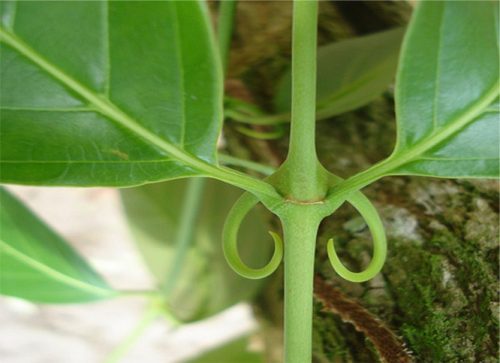Table of contents
What is Cat’s Claw/Samento?
Cat’s Claw (Uncaria tomentosa) is a plant that is named for its claw-shaped thorns. Samento is an extract from the Cat’s Claw plant.
According to an NIH review of Cat’s Claw:
There’s no conclusive scientific evidence based on studies in people that supports using cat’s claw for any health purpose.
Nevertheless, cure-all claims have been made by peddlers of products advertised as containing Cat’s Claw. The Hispanic community in particular has been target of bogus health claims about Cat’s Claw, which is known as Uña de Gato in Spanish.
In the US, products made from Cat’s Claw are typically treated as dietary supplements, which means they have very little regulation. When it comes to supplements in the US, it is often unclear if the product is of high quality.
Supplements may contain adulterants, be inconsistently produced, or not contain what they say on the bottle. And because herbal supplements are drugs, they may cause unexpected effects.
Complaints against Cat’s Claw peddlers
In 2004, the US Federal Trade Commission (FTC) charged Heritage Health Products with making unsubstantiated or false claims about products called Heritage Shark Cartilage and Heritage Cat’s Claw. Ultimately, the FTC charges were settled.
In 2008, the US Food and Drug Administration (FDA) warned Nature’s Alternative that it was violating US law by advertising Cat’s Claw as being potentially effective against at least 15 different conditions, including cancer, depression, and HIV.

Cat’s Claw/Samento for Lyme?
Related: Why herbs & supplements won’t help Lyme disease
A 2015 study by Lantos and colleagues found no scientific evidence to support the efficacy of Cat’s Claw and other herbs for Lyme disease.
According to the CDC:
Antibiotics are the only known effective treatment for Lyme disease, but a quick search on the internet will introduce you to other untested remedies that claim to cure Lyme disease or chronic Lyme disease. These products—available online or from some health care providers—may be dangerous, deadly, or simply a waste of money.
Samento is marketed as part of the “Cowden Support Program” by the shady supplement company NutraMedix. William Lee Cowden, MD is a doctor and homeopath who has been disciplined twice by the Texas State Board of Medical Examiners. Cowden developed the “Cowden Protocol” and is financially connected to NutraMedix.
Bill Rawls, MD is an OB-GYN turned chronic Lyme patient who should not be giving advice on infectious disease. Rawls runs his own shady supplement company Vital Plan and peddles Cat’s Claw-containing products.
Cat’s Claw is also part of the Buhner Protocol, a cocktail of herbs concocted by Stephen Harrod Buhner, an “Earth poet” with no credible background in science or drug development.
Dr. James Hamblin, MD, preventive medicine physician and staff writer at The Atlantic, warns about doctors who sell supplements:
Misleading Testimonials for Cat’s Claw
Related: Video: How fake medicine fools us
Lantos and colleagues described factors that might convince people that Cat’s Claw works for Lyme disease:
As this study illustrates, practitioners of unorthodox alternative therapies specifically target their marketing to the group of patients who believe they have Lyme disease.
The easy accessibility to testimonials from patients, particularly in the forms of online blogs, discussion boards, and promotional materials by alternative therapy providers, can be persuasive to vulnerable populations.
The internet has democratized access to reliable health information; not until the internet era has accurate information for lay-readers, not to mention the scientific literature itself, been so accessible to the public.
On the other hand, there is also a large volume of inaccurate information about Lyme disease on the internet, and this may impede some patients from making well-informed decisions about their health.
It may indeed be true that patients feel better while taking some of the treatment regimens described in this study. In the largest clinical trial of extended antibiotics for the treatment of persistent symptoms following treatment of Lyme disease, 38% of placebo-treated patients improved—a proportion not significantly different than among those who received antibiotics. This underscores the importance of the potential placebo effect in the assessment of any treatment’s efficacy.
Cat’s Claw/Samento Side Effects?
Adverse events have been reported in individuals who have consumed products with Cat’s Claw listed as an ingredient.
In 1997, doctors in New York reported on a woman who developed kidney failure after taking a Cat’s Claw-based herbal remedy.
In 2008, doctors in Spain reported on a woman who was taking drugs to control HIV along with cat’s claw. The cat’s claw seems to have prevented the woman’s body from properly metabolizing the HIV drugs. If the herb-drug interaction had not been caught in time, toxic effects may have occurred.
In 2009, doctors in Oregon, where real Lyme disease is rare, reported that a woman with “chronic Lyme” had developed silicate kidney stones. Silica was an ingredient in several supplements she was taking, including Cat’s Claw, Ganeden Biotech’s Digestive Advantage, and Nutracea’s FlexProtex supplements.
Resources
The Seattle Times: Hispanics’ Use Of `Miracle’ Herb Worries the FDA
FDA: Warning letter to Nature’s Alternatives
FTC: Heritage Health Products Company
NIH: Cat’s Claw
Quackwatch: Disciplinary Action against William Lee Cowden, M.D.
Psiram: William Lee Cowden
Phoenix New Times: Herb of Love
Lantos PM, et al. Unorthodox alternative therapies marketed to treat Lyme disease. Clin Infect Dis. 2015.
Flythe JE, et al. Silicate nephrolithiasis after ingestion of supplements containing silica dioxide. Am J Kidney Dis. 2009.
Hilepo JN, et al. Acute renal failure caused by ‘cat’s claw’ herbal remedy in a patient with systemic lupus erythematosus. Nephron. 1997.
Weiss J. Herb⁻Drug Interaction Potential of Anti-Borreliae Effective Extracts from (Samento) and (Banderol) Assessed In Vitro. Molecules. 2018.
López galera RM, et al. Interaction between cat’s claw and protease inhibitors atazanavir, ritonavir and saquinavir. Eur J Clin Pharmacol. 2008.
Erowele GI, Kalejaiye AO. Pharmacology and therapeutic uses of cat’s claw. Am J Health Syst Pharm. 2009.